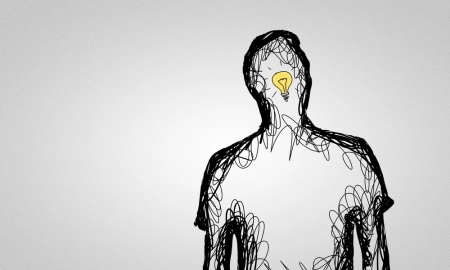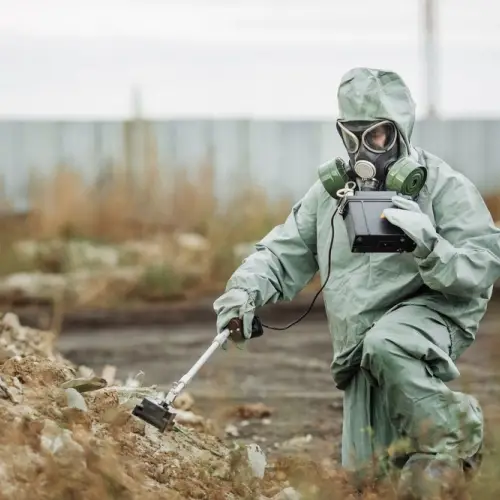
Throughout my career as an engineer, I have seen many myths and misconceptions persist in the public conversation about this technology.
Nuclear energy, often linked to historical incidents or fears of catastrophes, has become a controversial and misunderstood topic. However, much of this fear is based on a lack of accurate information and a distorted perception of the real risks.
In this article, I aim to debunk some of the most common myths and offer a clearer, more balanced view of nuclear energy. Understanding its true pros and cons is essential to assessing why it remains a key player in the global energy future.
Myth 1: "Nuclear energy is extremely dangerous"
One of the most widespread myths is that nuclear energy is extremely dangerous. When accidents such as Chernobyl in 1986 or Fukushima in 2011 are mentioned, it is normal to arouse fear. However, these events must be seen in context.
 First, nuclear technology has advanced enormously since Chernobyl. That accident was the result of design errors and poor management. Today's nuclear plants have multiple safety systems that make the probability of an accident extremely low.
First, nuclear technology has advanced enormously since Chernobyl. That accident was the result of design errors and poor management. Today's nuclear plants have multiple safety systems that make the probability of an accident extremely low.
Fukushima, on the other hand, was caused by an earthquake followed by a tsunami, a very rare event.
Despite what has happened, nuclear power remains one of the safest sources of electricity. In fact, studies such as those by the International Energy Agency and the Institut de Radioprotection et de Sûreté Nucléaire show that it causes fewer deaths per unit of energy than other sources such as coal or oil. For example, nuclear power causes 0.04 deaths per million gigawatt-hours, while coal causes 24.62.
In short, although nuclear energy is not without risks, the possibility of serious accidents is extremely low and, in any case, much lower than the risks associated with other forms of energy.
Myth 2: "Nuclear waste is unsustainable and dangerous"
 Another recurring myth is that nuclear power plants generate large quantities of radioactive waste that cannot be managed. The reality is different.
Another recurring myth is that nuclear power plants generate large quantities of radioactive waste that cannot be managed. The reality is different.
Nuclear power plants produce waste, but in much smaller volumes than people usually imagine. In one year, a nuclear power plant generates around 20 tons of waste. This may seem like a lot, but when compared to the tons of waste produced by a coal power plant in just a few days, the difference is significant.
In addition, coal waste includes toxic ash that pollutes air and water sources.
Nuclear waste is divided into three categories: low-level, medium-level and high-level. Low-level and medium-level waste, which constitute the majority, are managed without major complications. Only high-level waste, which represents only 3% of the total by volume, requires special handling due to its high radioactivity.
Currently, this waste is stored in secure repositories, and new technologies are already being developed to reduce its radioactivity or even reuse it in advanced reactors.
So, although the problem of nuclear waste is not completely solved, it is neither as large nor as alarming as it is often portrayed.
Myth 3: "Nuclear energy is obsolete"
At a time when renewable energies such as solar and wind are gaining ground, some people believe that nuclear energy is out of fashion. This is simply not true.
Nuclear power remains central to the global energy landscape, and will be crucial in the transition to a carbon-free future. Its biggest advantage over renewables is that it generates electricity continuously, regardless of whether the sun or wind is shining. This is known as “base generation,” which is essential for maintaining the stability of power grids.
Nuclear plants can operate 24 hours a day, 7 days a week, for periods of up to 18 months before needing to be refueled. This makes them a reliable source that perfectly complements renewable energy, which is more intermittent.
Nuclear technology has not stood still, however. Small Modular Reactors (SMRs) are now being developed, which are safer, cheaper and more flexible than traditional reactors. These new models can be installed in smaller locations and with fewer personnel, making them more affordable.
Myth 4: "A nuclear reactor can explode like an atomic bomb"
 This misconception comes from the confusion between nuclear reactors and atomic bombs. Although both technologies use the nuclear fission process, they operate in completely different ways.
This misconception comes from the confusion between nuclear reactors and atomic bombs. Although both technologies use the nuclear fission process, they operate in completely different ways.
An atomic bomb is designed to release all its energy at once, causing a devastating explosion. This happens thanks to a chain reaction that accelerates in a matter of seconds.
On the other hand, a nuclear reactor is designed to maintain a controlled chain reaction. In addition, reactors are equipped with safety systems that can stop the reaction if something goes wrong.
Therefore, it is not possible for a nuclear reactor to explode like an atomic bomb. These are different concepts and should not be confused.
Myth 5: "Nuclear energy is more expensive than other energy sources"
This statement is partially true if we only look at the initial cost. It is true that building a nuclear power plant requires a huge investment as they are large, complex projects that take years to build.
However, once they are up and running, operating costs are relatively low. In addition, nuclear plants have a very long lifespan, between 40 and 60 years, and with upgrades, they can last even longer.
By comparison, solar and wind power, while cheaper to install, have other challenges. For example, they require batteries or backup systems for when there is no sun or wind, making the system more expensive in the long run. And solar and wind plants also have components that need to be replaced periodically, such as solar panels or turbines.
When looking at the “Levelized Cost of Electricity” (LCOE), which includes construction, operation and maintenance over the life of a plant, nuclear power is competitive, especially in places where electricity costs are high or there are strict carbon emissions regulations.
Myth 6: "We don't need nuclear energy because renewables are sufficient"
 This belief reflects the optimism surrounding renewable energy, but it also ignores its current limitations. While solar and wind power are crucial to a cleaner future, they cannot do it all on their own.
This belief reflects the optimism surrounding renewable energy, but it also ignores its current limitations. While solar and wind power are crucial to a cleaner future, they cannot do it all on their own.
Both solar and wind power are intermittent: solar only generates electricity when there is sun and wind only when there is wind. This creates a challenge to meet electricity demand at all times.
While batteries can help store excess energy, current technology is not sufficient to meet a grid's energy needs for long periods of time without sun or wind. This is where nuclear power comes in: it can generate electricity constantly, day and night, ensuring that power is always available.
Combining renewable energy and nuclear energy is the key to a clean, safe and reliable energy system.
Conclusion
Nuclear energy remains one of the cleanest, safest and most efficient sources of electricity, and is essential in the fight against climate change. The myths and misconceptions surrounding this technology, while understandable, are often based on fear or misinformation.
It is important to understand that no energy source is perfect, but nuclear energy offers a solid alternative that can complement renewable energy.
Ultimately, combining multiple sources will be key to ensuring we have a reliable, carbon-free electricity supply in the future.
If we really want to reduce emissions and move towards a cleaner energy system, it is time to leave the myths behind and look at nuclear energy with a more objective eye.